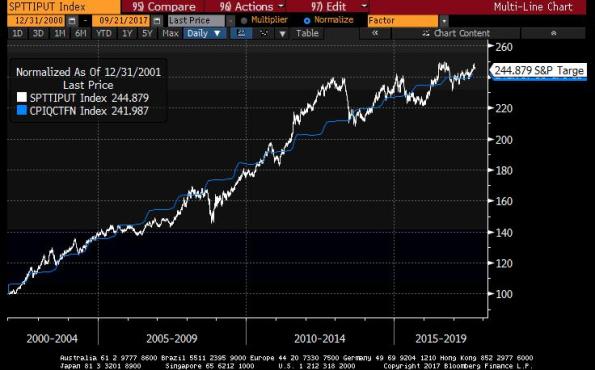A few months ago, in a couple of articles entitled “The Bias in Investor Perceptions” and “What’s Wrong With the Long Run?”, I started to lay out the case for individuals and family offices to approach the investment challenge like a well-run pension fund or endowment would. Most well-run pensions and endowments these days are run in a “liability-driven” manner, which means that instead of maximizing the performance of the fund’s assets, subject to the risk of those assets – classic “mean variance optimization” based on “Modern Portfolio Theory” – the manager aims to maximize the funded status of the plan subject to the variance in the funded status. That is, the manager recognizes that having assets which mimic the behavior of the liabilities is valuable and worth at least some sacrifice in expected return. Many such portfolios, especially when they are fully funded, have two “buckets” for assets, one that is designated as the “liability immunizing” portfolio and one that is designated the “return-seeking” portfolio.
The reason this is a valuable mode of thought for an individual or family office is that it tends to force a focus on the long run, since the “liabilities” in question (such as retirement, college education, bequests, etc) tend to be long-term in nature. But there are a couple of challenges.
One such challenge is to get the client to focus on that long run, rather than on the brokerage statement that shows up in the mail every month and is always one mouse-click away. And that’s what I discussed/lamented on in those prior two articles.
The other challenge is that, unlike a pension fund or endowment, an individual has a kaleidoscope of different liabilities that behave differently from each other. Some of these, like saving for retirement, can be approximated by general consumer price inflation (CPI). But some, like saving for college or saving for future health care costs, behave in their own unique ways. And so the conundrum for many years has been “sure, personal Liability-Driven-Investing makes sense, but what assets do I hold against those liabilities?”
This has driven calls for “goal-appropriate financial instruments,” led by people like Arun Muralidhar (who specifically used that term in “Goals Based Investing, the KISS Principle, and the Case for New Financial Instruments”) and Robert Shiller, who muses on making “previously untradable risks tradable” in Finance and the Good Society, and has a history of innovative enterprises to attempt the same.
What I am excited about is a step forward in creating these instruments…one that my company Enduring Intellectual Properties has had a key role in. Last week, S&P Dow Jones Indices announced the launch of the “S&P Target Tuition Inflation Index,” which is designed to reflect inflation of college tuition and fees over long-term periods. The index was designed by S&P on the basis of a method that we developed a very long time ago but could never figure out how to commercialize. It involves liquid securities, and so can easily be made into investible products such as mutual funds, ETFs, UITs, and other structured products that individual investors can buy. The chart below shows the index, alongside CPI for College Tuition and Fees (NSA).

As with any liquid markets-based index compared to a periodic economic indicator, the tracking error on a day to day basis is not necessarily good. But it is also not terribly relevant – how your fund does next week should not affect how you feel about your college fund! The strategy is built on an understanding of what the main drivers of college tuition are, and these turn out to be fairly simple (unlike is the case with, say, Medical Care). Because the main drivers of college tuition inflation are the same as the drivers of the index, the errors tend to be “mean-reverting,” meaning that the longer you hold the index the closer (in annualized terms) you tend to be to the target.
Investing in a product linked to this index will not be a substitute for saving money in the first place. But, having saved, investing in such a product should help to reduce the risk that the money saved for college suddenly evaporates, as it did for many parents in 2000-2002 and 2007-2009.
I am ecstatic that we were able to team up with S&P to create such an important index – one that will help investors save in a goal-driven way, with their eyes turned to the future rather than to the latest wiggle in the markets.
